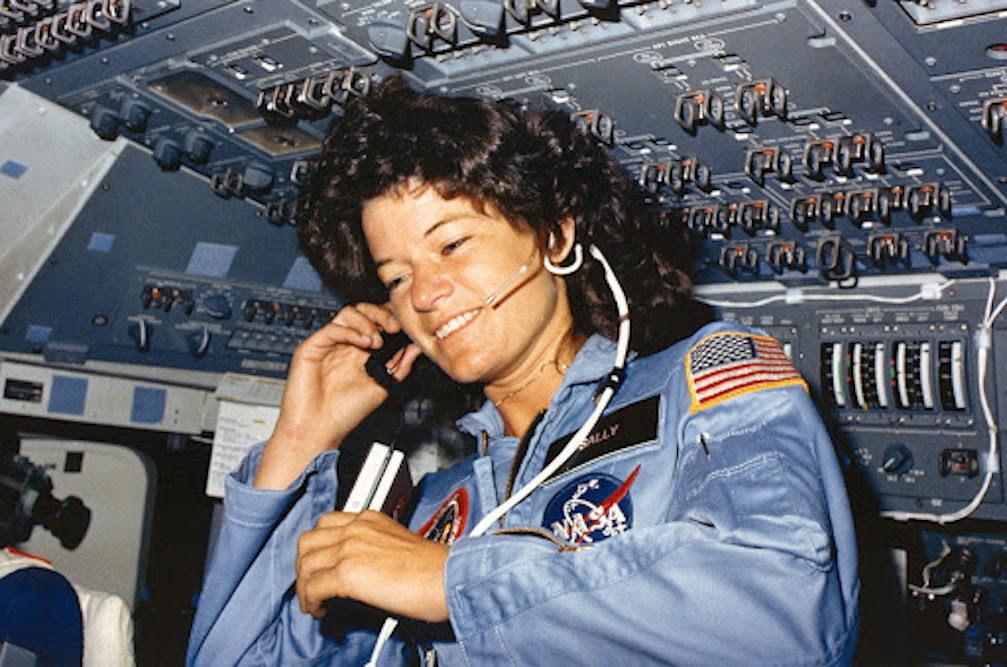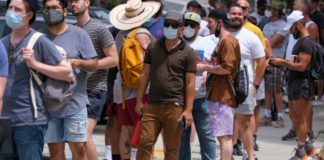
In 1981, an influential letter was published in Science, the journal of the American Association for the Advancement of Science (AAAS). Written by Shirley Malcom, then the head of AAAS’ Office of Opportunities in Science, the letter delivered an urgent warning: Discrimination against gay and lesbian professionals presented a problem to the field as a whole. “While we do not deny the effects on the persons who are discriminated against,” Malcom wrote, “we seldom see the effects on science and technology, which is poorer for the loss of any talent because of personal attributes that are irrelevant to ability as scientists and engineers, be it race, religion, sex, national origin, physical disability, or sexual orientation.”
More than four decades later, a groundbreaking new study suggests just how much poorer science and technology has become because of this discrimination. The research, conducted by sociologists Erin Cech of the University of Michigan and Tom Waidzunas of Temple University, is the first comprehensive national look at the experience of LGBTQ scientists, engineers, and mathematicians in STEM workplaces. With a sample size of more than 25,000, the study offers new insight into the bias that LGBTQ professionals must contend with at work. Among its findings: LGBTQ professionals experience 30 percent more harassment and social exclusion than their non-LGBTQ peers, and 20 percent greater incidence of professional devaluation, including lack of proper credit for their expertise.
Cech and Waidzunas’s work joins a long tradition of research that reveals practices and inequities that punish marginalized groups—and make a case for change. An early, visually striking use of data for advocacy is the collection of graphs titled “The American Negro,” which W.E.B. DuBois and his students prepared for an exhibit at the Paris Exposition of 1921. In bold colors and often unusual shapes, the graphs documented the cultural, economic, educational, and intellectual achievements of American Negroes, supporting DuBois’s assertion that they were “a small nation of people who were studying, examining and thinking of their own progress and prospects.”
Data needn’t be complex to make a point. More than half a century after DuBois, investigative reporter Randy Shilts published And the Band Played On, which presented data in its simplest form to expose how the national press’s failure to document AIDS helped the disease spread unchecked. In October 1982, when seven people died from Tylenol laced with cyanide, he reported, the New York Times published 34 stories about the murders and the federal investigation that followed. The same month, 634 people were diagnosed with AIDS, and 260 died. In all of 1981, the Times published three stories about AIDS, and in 1982, it published another three.
Shilts, one of the first openly gay journalists to write for a major newspaper, was part of the nascent modern gay rights movement that grew around the 1969 Stonewall uprising. The scholarly Journal of Homosexuality was founded soon after, in 1974, with the goal of publishing research that provided alternatives to the prevailing model of homosexuality as pathology. Through the ’70s and ’80s, sociological, historical, and literary studies of gay culture burgeoned in its pages, and to a lesser extent in other journals. Yet the experience of LGBTQ people in the workplace was little studied—in part because the same social climate that kept LGBTQ professionals closeted created barriers to conventional scholarly work and powerful disincentives for research.
Rochelle Diamond, a founding member of the National Organization of Gay and Lesbian Science and Technical Professionals (NOGLSTP), has been a practicing scientist and fully out since the early ’80s. She recalled scholars receiving no encouragement to ask questions about LGBTQ people’s work experience, few individuals willing to identify openly as LGBTQ, no funds to support research, and few journals that would consider such work.
Donna Riley, head of the School of Engineering Education at Purdue University, has long advocated for an equitable playing field for all minorities in STEM education and employment. She recalls searching the literature for workplace studies in the early 2000s, and finding very little quantitative work. “[The research] was thin. I would say formal research on the LGBTQ STEM community is absolutely a recent phenomenon,” she explained.
In the ’80s and ’90s NOGLSTP stepped into this vacuum by publishing a series of pamphlets about the realities of doing science while gay, including “Who are the Gay and Lesbian Scientists?” about queer scientists of historical note, “Measuring the Gay and Lesbian Population,” and “Sexual Orientation and Computer Privacy.” The pamphlets were influential and widely (albeit quietly) circulated within the queer scientific community.
Cech and Waidzunas’s work joins a long tradition of research that reveals practices and inequities that punish marginalized groups—and make a case for change.
The literature on LGBTQ people in STEM work was still thin in 2008, when Erin Cech, then a second-year graduate student in sociology, ran a literature search for studies of LGBTQ students’ experience of bias in undergraduate engineering programs. Her search didn’t turn up a single paper. Cech, who is lesbian, studied electrical engineering as an undergraduate. She knew about bias. “I didn’t know how I’d do it,” Cech told me. “I didn’t know what I’d find. I just knew I needed to research this.”
Even the notion that LGBTQ people’s experience warranted study challenged the prevailing culture in many STEM settings. Cech remembers that to recruit students for their first research effort, she and fellow student Tom Waidzunas would visit the empty lecture halls in UC San Diego’s engineering building at night. They’d walk down the rows of seats to the front of the room, and write on the chalk board, Are you a lesbian, gay, bisexual engineering student? Please email us. “Just walking down those steep stairs and doing that felt so subversive, but also so important,” said Cech. “We felt how countercultural it was to be in this engineering building and writing that on a chalkboard in 2008.”
Cech and Waidzunas’s resulting paper, published in 2011, stated that “the experiences of people who identify as lesbian, gay, and bisexual (LGB) are all but absent in literature about math and science-based professions in general and have never been documented in research related to the engineering profession.” Other researchers have told Cech that this paper encouraged them: It confirmed that workplace research could be done and that it could get published. Over the next decade, as gay people became more visible in American popular culture, Cech, Waidzunas, and others found it incrementally easier to study larger populations. Every succeeding publication confirmed that LGBTQ people constituted a significant minority within the STEM workforce, and that they faced a variety of biases and discriminatory treatment. Yet there was no study of national scope, the kind that carries weight with policy makers.
This lack of national data persists even though there is a federal agency, the National Center for Science and Engineering Statistics (NCES), specifically tasked by Congress to survey and report on the status of minorities in the STEM workforce. Part of the National Science Foundation (NSF), NCSES publishes reports, including a biennial report on women and minorities, that do everything from help Congress draft legislation to undergird university and foundation programs. But NCES does not classify LGBTQ people as underrepresented, keeping them from many opportunities and funding avenues within NSF and other federal agencies.
NCSES’s spokesperson has said that the center is conducting internal research and waiting for federal recommendations for standardizing data collection across agencies. But Nancy Bates, formerly the Census Bureau’s senior methodologist, points out that other federal entities, including the Departments of Education and Justice, have moved more quickly on this issue. The Department of Education has successfully included questions about sexual orientation and gender identity in its surveys since 2016. She called NCSES’s leisurely pace “a head scratcher.”
This year NCSES will, for the first time, pilot a question related to gender identity in its 2021 survey of college graduates. Yet an NSF spokesperson could not say when its surveys will deploy fully tested questions that would enable it to determine the percentage of sexual minorities in the STEM workforce.
Cech and Waidzunas are among those waiting for NCSES to act. In 2015, NSF’s Division of Human Resources Development funded their proposal for a national survey of multiple underrepresented minorities—women, Latinx, Asians, African Americans, people with disabilities—in STEM workplaces. More than 25,000 scientists, engineers, and mathematicians—including more than 1,000 who self-identified as LGBTQ—replied. Their paper on bias against LGBTQ professionals is the first of many that will come from this survey.
Their findings, which make clear that biases against LGBTQ professionals undermine their ability to do their best work, may increase the pressure on NCSES to include sexual minorities in their surveys. Still, because their survey isn’t an NCSES-sponsored study, its influence with policy makers will not be as broad as it could be.
Bias against sexual minorities not only hurts individuals; it also undermines the American research enterprise. This year, Gallup reported that its 2020 survey showed that 15.9 percent—one in six—members of Generation Z identified as lesbian, gay, bisexual, or transgender. This is the talent pool that will produce the next generation of American scientists, engineers, and mathematicians.
We know that no single group holds a monopoly on talent. Intelligence and imagination, creativity and tenacity, and other capacities required to do excellent science, engineering, and mathematics, are distributed randomly through the population. A growing body of research has shown that the most innovative ideas and solutions come from diverse groups. Diversity is necessary but not sufficient: For their creativity and innovation to flourish, all the members of a work group must feel that they and their contributions are valued.
Nancy Hopkins, who successfully challenged MIT to end discrimination against women, said, “If you don’t have women, you’ve lost half the best people.” In the new century, the message from American demographics to STEM employers is that if they don’t welcome and support LGBTQ professionals, they’ll lose a significant fraction of the best people.
Shirley Malcom’s words from 40 years ago are prescient: Science and technology is poorer for the loss of any talent because of personal attributes that are irrelevant to ability as scientists and engineers. The workplaces that welcome LGBTQ professionals as full citizens will draw from a richer pool of talent, and bring a wider range of problem-solving skills to their work. Those that do not will increasingly find themselves on the sidelines of innovation.







